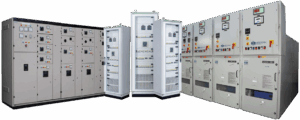Stainless steel is a widely used material in various industries due to its durability, strength, and corrosion resistance. Among the different stainless steel grades, SS 304 compression tube fittings are one of the most commonly used types. However, different grades of stainless steel offer varying levels of performance, making it essential to understand the differences. This article provides a detailed comparison of Stainless Steel 304 Compression Tube Fittings with other grades to help you make an informed choice.
What Are SS 304 Compression Tube Fittings?
SS 304 is an austenitic stainless steel containing 18% chromium and 8% nickel. It is known for its good corrosion resistance, ease of fabrication, and affordability. SS 304 compression tube fittings are widely used in industries such as food processing, chemical plants, and plumbing systems because they provide a secure and leak-free connection.
These fittings are preferred for their:
- Corrosion Resistance – Suitable for many environments but not recommended for marine or acidic conditions.
- Strength and Durability – Offers good tensile strength and can handle moderate pressure.
- Cost-Effectiveness – More affordable compared to higher-grade stainless steels.
- Ease of Maintenance – Requires minimal upkeep and can withstand frequent use.
Comparing SS 304 Compression Tube Fittings with Other Grades
Different stainless steel grades provide various benefits based on their composition. Let’s compare Stainless Steel 304 Compression Tube Fittings with other popular stainless steel grades.
1. SS 316 Compression Tube Fittings
SS 316 is an improved version of SS 304 with the addition of 2-3% molybdenum, which enhances its corrosion resistance, particularly against chlorides and acidic environments.
Key Differences:
- Corrosion Resistance: SS 316 resists pitting and crevice corrosion better than SS 304, making it ideal for marine, pharmaceutical, and chemical applications.
- Cost: More expensive than SS 304 due to its enhanced properties.
- Strength: Similar mechanical properties to SS 304, but better for extreme conditions.
2. SS 321 Compression Tube Fittings
SS 321 is similar to SS 304 but contains titanium, which stabilizes the structure at high temperatures and prevents carbide precipitation.
Key Differences:
- High-Temperature Resistance: Performs better in environments above 800°F (427°C) where SS 304 may degrade.
- Corrosion Resistance: Comparable to SS 304 but superior in applications involving heat.
- Applications: Used in aerospace, exhaust systems, and heat exchangers.
3. SS 410 Compression Tube Fittings
SS 410 is a martensitic stainless steel, known for its high strength and wear resistance, but lower corrosion resistance compared to SS 304.
Key Differences:
- Strength and Hardness: SS 410 is stronger and harder than SS 304, making it suitable for mechanical applications.
- Corrosion Resistance: Not as resistant as SS 304, especially in humid or corrosive environments.
- Applications: Commonly used in valve components, pump shafts, and turbine blades.
4. SS 904L Compression Tube Fittings
SS 904L is a high-performance stainless steel with superior corrosion resistance, particularly against sulfuric acid and chloride-rich environments.
Key Differences:
- Corrosion Resistance: Significantly better than SS 304 and SS 316.
- Cost: Much higher than SS 304 due to its enhanced properties and alloy composition.
- Applications: Used in chemical plants, marine industries, and offshore platforms where extreme corrosion is a concern.
5. Duplex Stainless Steel Compression Tube Fittings
Duplex stainless steels, such as 2205 duplex, have a mixed microstructure of austenite and ferrite, offering higher strength and improved corrosion resistance compared to SS 304.
Key Differences:
- Strength: Nearly twice as strong as SS 304, reducing material thickness and weight.
- Corrosion Resistance: Better resistance to stress corrosion cracking.
- Applications: Suitable for oil and gas, marine, and heavy-duty industrial applications.
Choosing the Right Stainless Steel Grade for Compression Tube Fittings
The choice of stainless steel grade depends on factors such as corrosion resistance, cost, strength, and application requirements. Here’s a simple guide to help you decide:
| Stainless Steel Grade | Corrosion Resistance | Strength | Cost | Best Applications |
|---|---|---|---|---|
| SS 304 | Good | Moderate | Affordable | General use, food processing, plumbing |
| SS 316 | Excellent | Moderate | High | Marine, chemical, medical |
| SS 321 | Good | High-Temperature Resistant | Moderate | Aerospace, exhaust systems |
| SS 410 | Low | High | Low | Mechanical parts, pumps, turbines |
| SS 904L | Superior | Moderate | Very High | Acidic environments, marine |
| Duplex 2205 | Very High | High | High | Heavy industry, oil and gas |
Conclusion
Each stainless steel grade offers unique advantages. SS 304 compression tube fittings remain the most popular choice due to their balance of affordability, corrosion resistance, and strength. However, if you need fittings for marine environments, high temperatures, or chemical exposure, upgrading to SS 316, SS 321, or SS 904L may be a better option.






